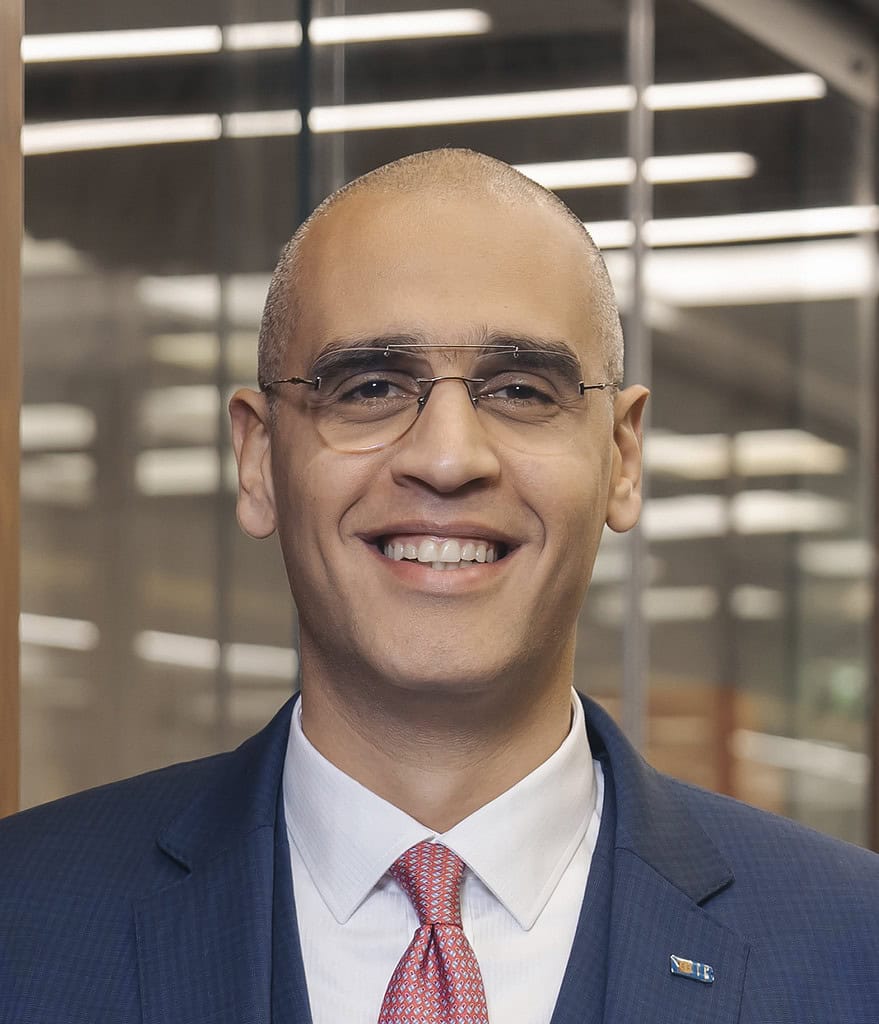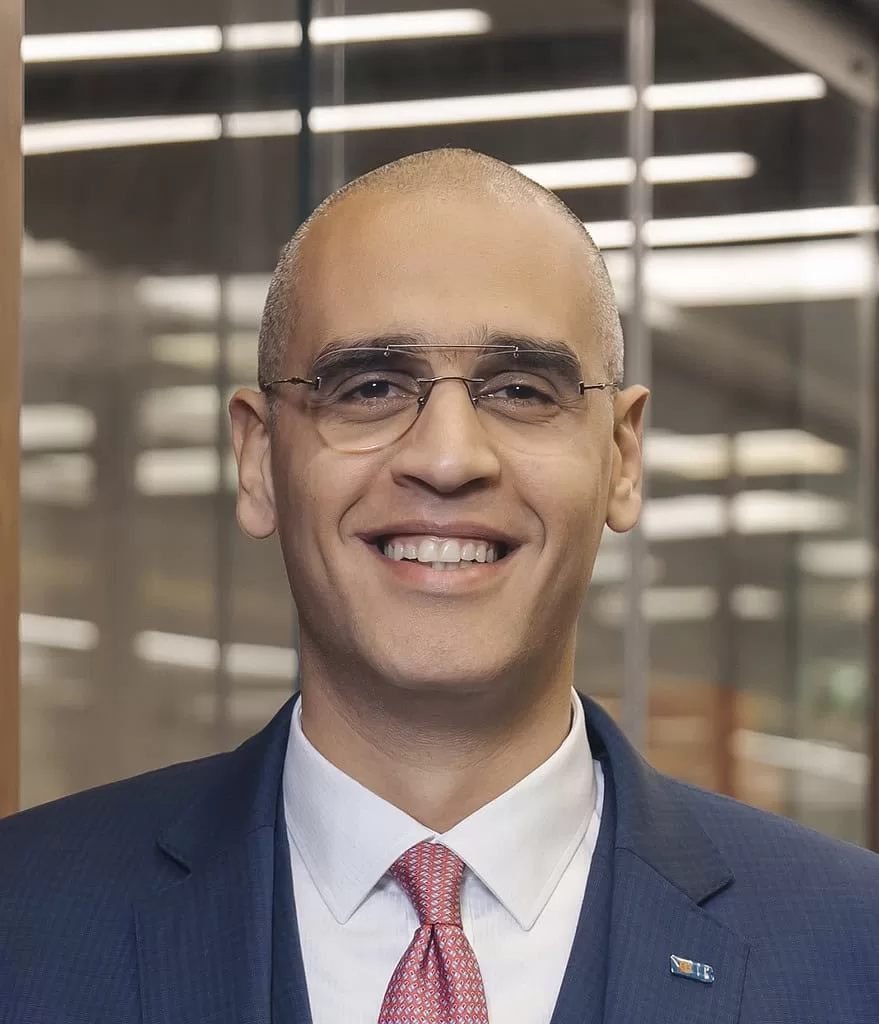After a bailout pulls Egypt back from the brink, new foreign investment and robust local banks sector suggest a return to growth.
Last fall, as conflict erupted in Gaza, Egypt’s economy, already weakened by the Russia-Ukraine war and the Covid-19 pandemic, teetered on the brink of collapse. By early 2024, the Arab world’s largest country faced the risks of regional conflict on its Sinai border and default on its foreign debt, prompting urgent recovery measures.
The first lifeline came from the United Arab Emirates (UAE). In February, ADQ, Abu Dhabi’s sovereign fund, signed a $35 billion deal, including $11 billion in existing UAE deposits at the Central Bank of Egypt (CBE), to develop Ras el-Hekma, a new Mediterranean tourism hot spot. Shortly thereafter, the International Monetary Fund and the European Union each pledged $8 billion aid packages, with the World Bank adding another $6 billion.
“The size of the investments was huge and allowed Egypt a second shot at stability,” says Thys Louw, emerging market debt portfolio manager at Ninety-One, the London-based South African investment manager.
The timely injections rejuvenated investor confidence. In the weeks following the financial rescue, foreign buyers rushed to Cairo’s debt market, buying one-year treasury bills and other short-term bonds and seizing new opportunities across multiple sectors. The authorities say the Ras el-Hekma project alone could draw in up to $150 billion in investments.
The latest IMF agreement came at a price; Egypt committed to exchange-rate flexibility, fiscal discipline, a slowdown in infrastructure spending, and measures to encourage private-sector growth. In March, the CBE raised its main policy rate by 600 basis points to 27.75% and floated the currency. The Egyptian pound dropped 40% that day, but the CBE stuck by its decision.
Business circles remain hopeful that the bailout can drive long-term reform.
“The recent efforts by authorities to restore macroeconomic stability have had a positive effect on investor confidence and private-sector sentiment,” comments Omar El-Husseiny, head of the Treasury Group at Commercial International Bank (CIB), one of Egypt’s biggest private lenders. “The government’s implementation of various policies and initiatives to attract foreign direct investment has focused on sustainable growth and reducing investment barriers, increasing investors’ appetite.”
Overall sentiment is gradually improving “in light of the stabilization of the exchange-rate situation and the disinflation path shown in the past few months,” says Mohamed Abou Basha, managing director and head of Macroeconomic Analysis at EFG Hermes Research. “Reduced interest rates and structural policy changes are the key next step to boost investor confidence.”
Privatization Kicks Off
Privatization is another major challenge in a country where the state and the military still control large sectors of the economy. To attract foreign currency and boost local market competitiveness, authorities agreed back in 2022 to sell stakes in 32 state-owned businesses, including Telecom Egypt, luxury hotels in Cairo, water-bottle manufacturer Safi, gas firm Wataniya, and financial institutions including Banque du Caire, Arab African International Bank, and United Bank of Egypt. Last year, foreign direct investment surged to nearly $10 billion, the highest level on record.
Gulf states’ sovereign wealth funds and banks have been the main buyers, followed by European companies like Denmark’s Maersk, which announced last fall it would acquire a 51% ownership in the Zafarana wind farm complex, and the UK’s Actis, which is in the process of acquiring another wind farm, Gabal el Zeit. Notably, US investors are also stepping up. In May, Philip Morris bought a 14.7% share in Egypt’s Eastern Tobacco, while Carlyle Group is looking to secure hydrocarbon assets.
“Egypt’s diverse sectors, including tourism, education, health care, infrastructure, and green energy, present significant opportunities for foreign investors,” El-Husseiny says. “These sectors continue to offer substantial growth potential.”
So far, about half of the planned privatizations have actually gone through. A few more are expected to be finalized by the end of the year, but the government, which initially set a privatization target of $6.5 billion for 2024, has since downsized its ambitions.
“It wasn’t just lip service, but the question is, after this first phase, is there going to be impetus to do a second phase?” says Louw. “With this [Ras el-Hekma] deal essentially being organized from the top, this gives the authorities even less incentive to continue with privatization.”
Despite persistent challenges, Moody’s, Fitch, and Standard & Poor’s have all upgraded Egypt’s outlook to positive in recent months. The IMF forecasts 3% GDP growth for 2024, with inflation expected to decline after reaching 38% last year.
The Ras el-Hekma deal has given Egypt’s economic prospects a boost, but serious questions remain, including about the government’s ability to manage the structural account deficit and achieve debt sustainability. With the prospect of another billion-dollar property deal with Saudi Arabia, which could further fill state coffers and buy time, the issue question now is whether the authorities will use the additional breathing room to implement reforms as promised.
Banks Weather The Storm
Throughout the financial crisis, however, Egypt’s banking sector has remained robust. Local banks, buoyed by high interest rates, reported record earnings last year. Bank assets and capital adequacy ratios are solid, with the top five banks capturing 63% of the sector’s profits, according to the CBE.
Following the bailout, the central bank’s reserves are at a record high. Local banks anticipate a boost in foreign currency inflows from international investors and improved remittances from Egyptian workers abroad, which fell by 30% in 2023. Increased liquidity should encourage banks to lend more to small and midsize enterprises, fostering local private-sector growth.
“The Egyptian banking sector has strongly benefited from the higher interest rate environment, with net interest margins, profits, and return on equity at all-time highs, especially for privately owned banks,” argues Elena Sanchez, managing director and head of Financials at EFG Hermes Research. “Credit quality has been remarkably resilient against a challenging macroeconomic backdrop in 2022-2023, and banks at large have used strong revenue growth to add to their provisioning buffers.”
El-Husseiny credits the CBE’s adoption of a tighter monetary policy stance with easing inflationary pressures and putting inflation itself on a downward trajectory.
“The implementation of a flexible exchange rate has successfully eliminated foreign exchange shortages,” he adds. Egypt has floated its currency several times, but always quickly reversed the decision when devaluation sped up. Since March, all eyes are on the CBE and its willingness to stay the course.
“I think it’s one of the biggest things for any investors,” Louw argues, “because it doesn’t help being able to put money in if you can’t take money out. So, [the central bank’s] willingness and ability to stick to this program will be crucial to sustain foreign inflows and foreign investment into the country.”
The other upside for investors: a currency drop. Some local assets now appear quite cheap.

“Egypt has become a competitive destination for manufacturing, considering how much the foreign exchange has weakened,” says EFG Hermes’ Abou Basha. “Foreign investors, though, are still waiting for more clarity on policy directions, geopolitical risks, and interest rates.”
Investors have been burned in Egypt in the past, “so there is still a level of cautiousness around it,” Louw notes. “You need to come in with your eyes wide open. Any country with yields close to 30% is not risk-free. But I think you’re in the phase of the investment cycle where I would be pretty comfortable putting money to work in Egypt.”
Only time will tell how sustainable Egypt’s economic recovery proves to be, but local banks are already leveraging tech to explore new growth avenues.
The CBE is expected to issue new digital licenses this year, further solidifying Egypt’s position as a regional fintech leader. Additionally, the country’s banks and other private financial services providers are eyeing regional expansion in the Middle East, Africa, and beyond.
In July, MNT-Halan, one of Egypt’s biggest fintechs and the country’s first unicorn, announced the full acquisition of Tam Finans, Turkey’s leading non-bank lending service for small to midsize enterprises, with a local loan book of $300 million. A few months prior, it stepped into Pakistan, acquiring Advans, a microfinance bank.
Established in 2018, MNT-Halan is now one of the Middle East’s fastest-growing fintechs, providing an array of services that include digital payments, e-commerce tools, and business and consumer lending. It raised $157 million in June alone, after pulling in $400 million in 2023.
